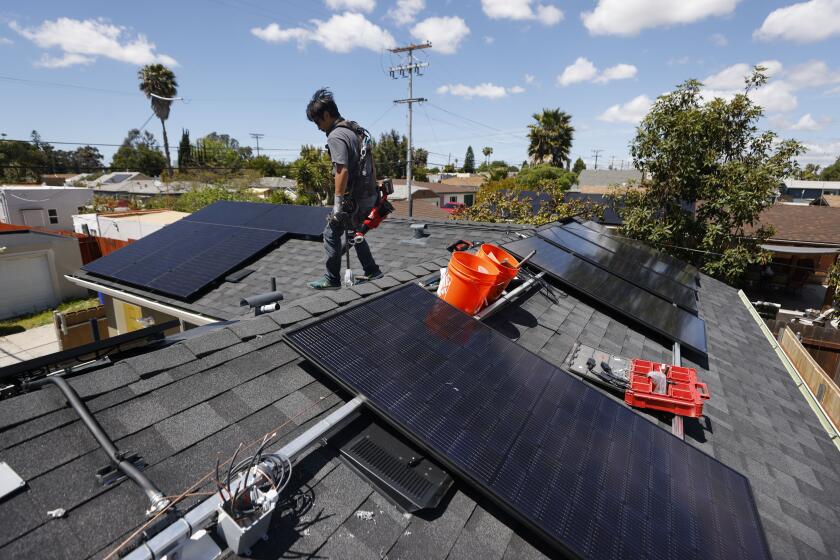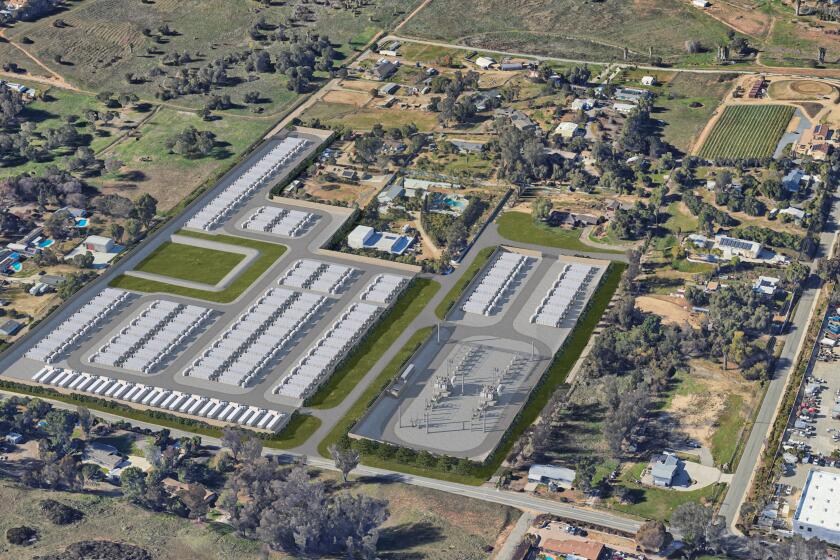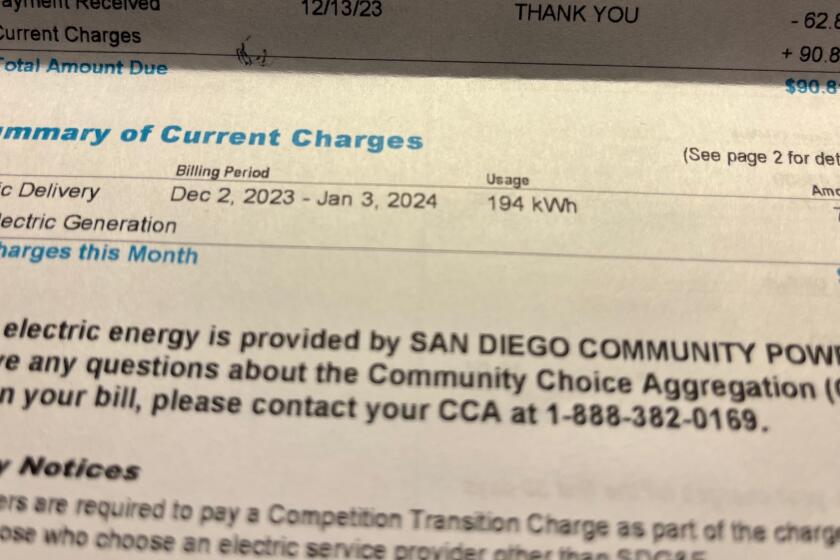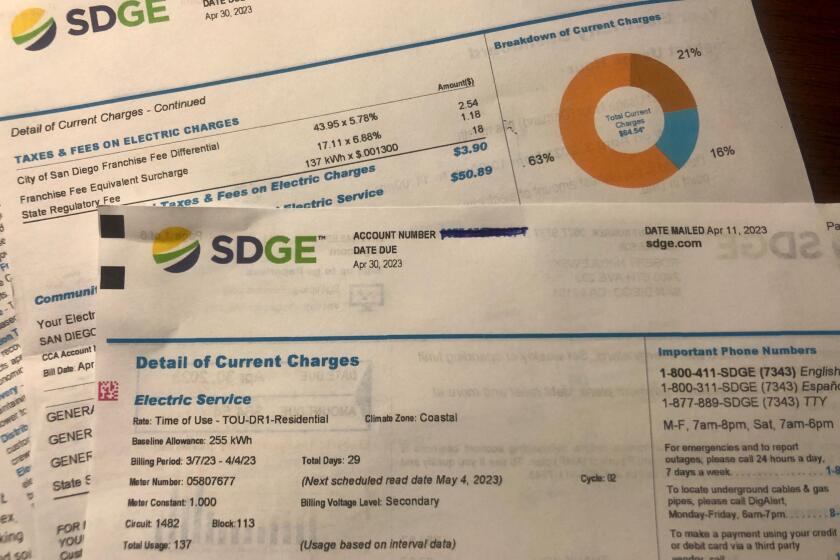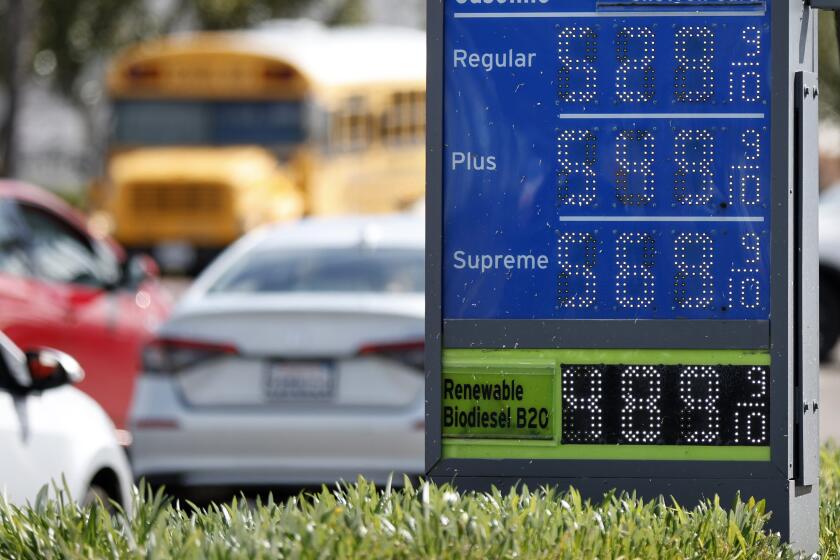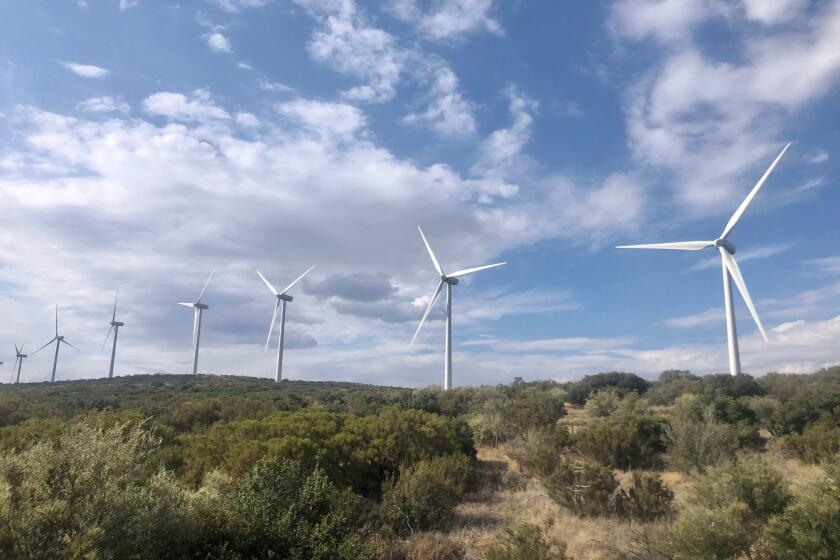Another step toward getting the nuclear waste off the beach at San Onofre?

Rob Nikolewski tours the decommissioning of San Onofre Nuclear Generating Station.
The Trump administration’s ”skinny budget” found some money for nuclear waste.
And that may reflect a sense of momentum on Capitol Hill to find some sort of way to deal with the massive amounts of nuclear waste at plants such as the San Onofre Nuclear Generating Station (SONGS), even though moving the spent fuel would take years.
The new administration unveiled its first budget blueprint on Thursday and proposed spending $120 million for starters to “initiate a robust interim storage program” while also looking at reviving the Yucca Mountain nuclear waste repository in Nevada.
“These investments would accelerate progress on fulfilling the federal government’s obligations to address nuclear waste, enhance national security and reduce future taxpayer burden,” a note said in the section reserved for the U.S. Department of Energy (DOE).
The White House’s 53-page plan called for boosts in defense spending but cuts in domestic programs and federal agencies. Even DOE’s budget came in for a 5.6 percent reduction.
Like every other economic plan put forth by any presidential administration, the Trump administration’s proposals are just that — proposals that are ultimately subordinate to what Congress hammers out on the budgetary front.
But David Victor, the chairman of the SONGS Community Engagement Panel, said the appropriation for nuclear waste may be one of the only topics in the current political environment that can generate support from members of both parties.
There are 3.6 million pounds of nuclear waste sitting along the coastline at SONGS and 76,000 metric tons of spent fuel at sites across the country.
“There’s a lot of Trump’s proposed budget that horrifies me, in particular around cutting funding for science and energy, but (long-term nuclear storage) is an area where I think the nation is now starting to make some progress,” Victor said.
Rep. Darrell Issa, R-Vista, who has introduced a bill called the “Interim Consolidated Storage Act,” said he thinks the chances for funding the White House nuclear waste proposal are “extremely good.”
“You have an active group of members, some of whom are Democratic members, who have a vested interest” in moving legislation forward, Issa said. “And the idea that it would be forced out, the fingerprints of whoever wanted to force it out would show all over.”
A $120 million appropriation is a tiny amount of money in relation to the federal budget, but supporters of consolidated interim storage said it would represent a show of resolve on the part of the federal government.
“As a budget line item it’s not a bad number at all,” Issa said in a telephone interview from Washington D.C. “It’s sufficient to do the feasibility of these sites.”
Consolidated interim storage sites are designed to be built in isolated locations where multiple nuclear facilities could deposit their waste.
Two potential interim storage locations have been discussed — one in West Texas and another in eastern New Mexico.
A company in Andrews, Texas has filed an application to accept 5,000 metric tons of nuclear material and is represented by Rep. Mike Conaway, R-Texas, who has co-sponsored Issa’s bill.
Getting the massive nuclear waste repository at Yucca Mountain, located about 100 miles from Las Vegas, back on track will assuredly lead to a battle on Capitol Hill.
Both Democrats and Republicans from Nevada blasted the Trump proposal within moments of its release.
“Washington needs to understand what Nevada has been saying for years: We will not be the nation’s nuclear waste dump,” said Sen. Dean Heller, R-Nev.
The federal government spent about $15 billion to build the facility at Yucca to house nuclear waste from sites across the country but then-Sen. Harry Reid, D-Nev., led the fight to shut the repository down and in 2010 Barack Obama suspended licensing for the site.
Yucca Mountain was scheduled to open in 2017.
While taking a tour of SONGS last month with Issa, Rep. John Shimkus, R-Ill., and chairman of the House subcommittee that reviews nuclear sites, was asked if Yucca Mountain was coming back onto the bargaining table.
“It’s never been off the table,” Shimkus said.
Issa’s bill would be paid for by using part of the federal government’s Nuclear Waste Fund, which is worth upward of $40 billion and was funded by ratepayers in areas powered by nuclear plants.
A 2014 court order stopped the feds from taking fees from electricity customers because, with Yucca Mountain sidelined, the government had no place to send nuclear waste.
“We’re paying a lot of money for the privilege of not having a solution that we were obligated to have,” Issa said. “It’s not free. It’s going to cost every taxpayer money until there’s a working solution.”
But even if Congress adopts a plan roughly similar to the White House proposal, there are a series of practical and regulatory hurdles to clear.
For example, sites like SONGS still need to place some of their spent fuel into canisters. Then federal law needs to be changed to install a reliable funding mechanism for interim sites and a strategy needs to be adopted in order to move the waste from one place to another.
“There is still a long way to go,” Victor said. “We could have troubles on any of those fronts, but I think what’s encouraging is that on every single one of those fronts, we’re starting to see progress.”
More than 8 million people live within a 50-mile area of SONGS, which has not produced electricity since January 2012, after a steam generator leaked a small amount of radiation.
Southern California Edison (SCE) is the majority owner of the plant, which is in the process of being decommissioned. San Diego Gas & Electric owns 20 percent.
Edison officials said they were heartened by the news of $120 million proposal.
“We are pleased to see funding proposed to restart the Yucca licensing process, and continue to also support interim storage proposals that would enable SCE to move San Onofre’s used fuel to an off-site location,” said spokesperson Maureen Brown.
This story was updated to include a comment from Southern California Edison.
Business
rob.nikolewski@sduniontribune.com
(619) 293-1251 Twitter: @robnikolewski
ALSO
Why San Onofre’s nuclear waste stays on the beach
San Onofre’s seismic risks ‘reduced’ but residents still skeptical
Get U-T Business in your inbox on Mondays
Get ready for your week with the week’s top business stories from San Diego and California, in your inbox Monday mornings.
You may occasionally receive promotional content from the San Diego Union-Tribune.


